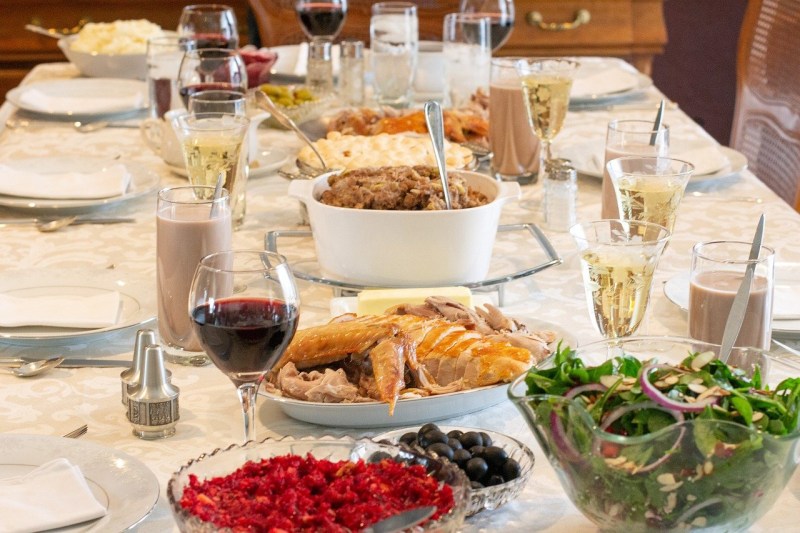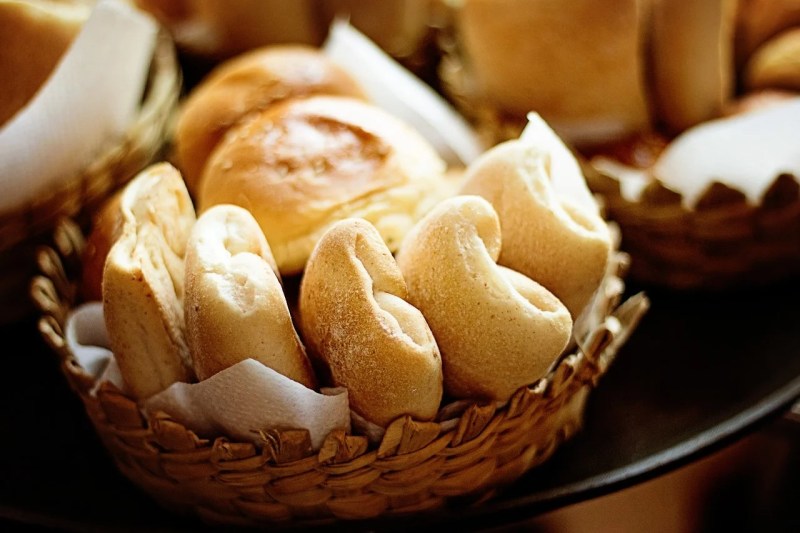Here comes the season for smacked lips, roast turkey, and thankful hearts! Thanksgiving Day, also called Turkey Day, is a national day that draws family and friends to the dining table to reflect on the year in gratitude. The dining table is donned with mouth-watering dishes that could make anyone overindulge and compromise on their dieting goals.
Thinking about Thanksgiving dinner calories can be difficult because you want to enjoy the meals and still be in top shape. But not to worry, we will plunge into the world of delicious Thanksgiving foods and how you can make them healthy. It is time to dive in!
How many calories is the average Thanksgiving dinner?

The average Thanksgiving dinner is loaded with fatty foods that increase calories. These meals contain between 3,000 and 4,500 calories with approximately 160 grams of fat. However, relishing the goodness of Turkey Day does not have to cost you this much. There are Thanksgiving dinner hacks to reduce fat in your meals, such as trimming the fat and throwing in more veggies for a colorful and healthy plate.
Most common Thanksgiving foods

- Roast turkey: Thanksgiving Day is not complete without turkey on the menu. This centerpiece dish is made with butter, seasoning, spices, and herbs. The average serving size is 3 ounces. It contains about 160 calories, with an additional 25 calories when served with the skin.
- Mashed potatoes: Creamy mashed potatoes made with butter and milk or cheese should make the perfect side dish for Thanksgiving dinner. A 1-cup serving contains 214 calories; its caloric value increases with more butter.
- Stuffing: This is another delicious Thanksgiving side dish made with bread cubes, broth, spices, and herbs. It is typically “stuffed” into the turkey but can also be served as a separate dish. Depending on the recipe, a half-cup serving of stuffing contains 180 calories.
- Pumpkin pie: A Thanksgiving special, pumpkin pie is made with spiced pumpkin and contains a sweet and creamy filling. You can garnish it with cranberries, whipped cream, or your favorite toppings. A slice, typically 1/8 of the pie (9 inches), contains 323 calories.
- Green bean casserole: Made with either fresh or frozen green beans, this casserole sets the tone for a healthy dinner table. This is because it includes mushrooms, onions, and other veggies of your choosing. You will get about 191 calories with a 1-cup serving.
- Cranberry sauce: The cranberry sauce, with its tangy-sweet taste, is a flavorful, healthy accompaniment to go with your turkey. A 1/4 cup serving contains about 106 calories.
- Dinner rolls: This is a common side dish for the holidays. It is soft and fluffy, enhancing your enjoyment of this the side. A roll, which weighs 2 ounces, contains 76 calories, which could be more if butter is added.
Is it OK to eat anything you want on Thanksgiving?

We understand that Thanksgiving is a time to be merry and share the love of family with meals, and you may want to take it all in. Well, you can eat anything you want during a holiday celebration. However, when it comes to what or what not to eat, try to make healthy choices.
For example, instead of eating canned cranberry sauce, opt for a healthy recipe and make yours at home. The homemade option ensures you control the ingredients and avoid artificial additives and sugars. You may also want to consider moderation and portion control. Eat what you want, but be careful not to overindulge or eat emotionally. You could share a pie or use a smaller plate; that way, you eat what you want.
Additionally, if you’re on a diet for a medical condition, you should heed your doctor’s or dietitian’s advice to stay in optimal health.
Tips for making your Thanksgiving a bit healthier

Have a healthy breakfast or lunch
To avoid overeating, have a healthy breakfast or lunch, depending on the time set for your Thanksgiving dinner. This ensures you are not starving before your Thanksgiving meal and tempted to load up on high-calorie foods. Go for carbs with high fiber, such as oatmeal and pair with protein and veggies.
Make your plate more colorful
Ensure that your meals contain plenty of veggies, like carrots, cauliflower, bell peppers, Brussels sprouts, green beans, squash, etc. You can roast these vegetables in a drizzle of olive oil in an oven and use them for your side dishes. Also, incorporate fruits as they provide nutrients without artificial or processed sugars.
Cut down on the fat
You can enjoy your turkey without consuming unhealthy fat. Focus on the turkey breast as it contains white fat, which is a healthy option. Also, avoid the gravy, because it’s made with fat from the roast turkey, butter, and flour, all of which are high in calories.
Stay hydrated
Water is your best bet for a healthy beverage with zero calories. Drinking adequate water keeps your body functioning optimally. It can keep you from overindulging by making you feel satiated. Feel free to make your water flavorful by infusing it with fresh fruits, such as limes, lemons, watermelon, and cucumber. Avoid processed fruit juice, alcohol, and soda drinks as they are high in calories.
Frequently asked questions

Should I count calories on Thanksgiving?
While Thanksgiving is for counting your blessings, whether you count calories depends on what is most important to you. You may decide to enjoy a day or two without care about calories, or you can go ahead and strip your meals of high calories.
How many calories are in a normal dinner?
The amount of calories in your dinner depends on your portion size, dietary habits, and food choices. However, the caloric value of a normal dinner could range from 500 to 700 calories.
Is a Thanksgiving dinner healthy?
The average Thanksgiving dinner table has a variety of dishes, ranging from high-fiber to proteins and vegetables. Some meals can also contain high carbs, sodium, fat, and sugar. This means that your food choices and preparation methods can tilt your Thanksgiving dinner to a healthier side. Be sure to check your Thanksgiving meal calories, as mentioned in this article, to guide you.




